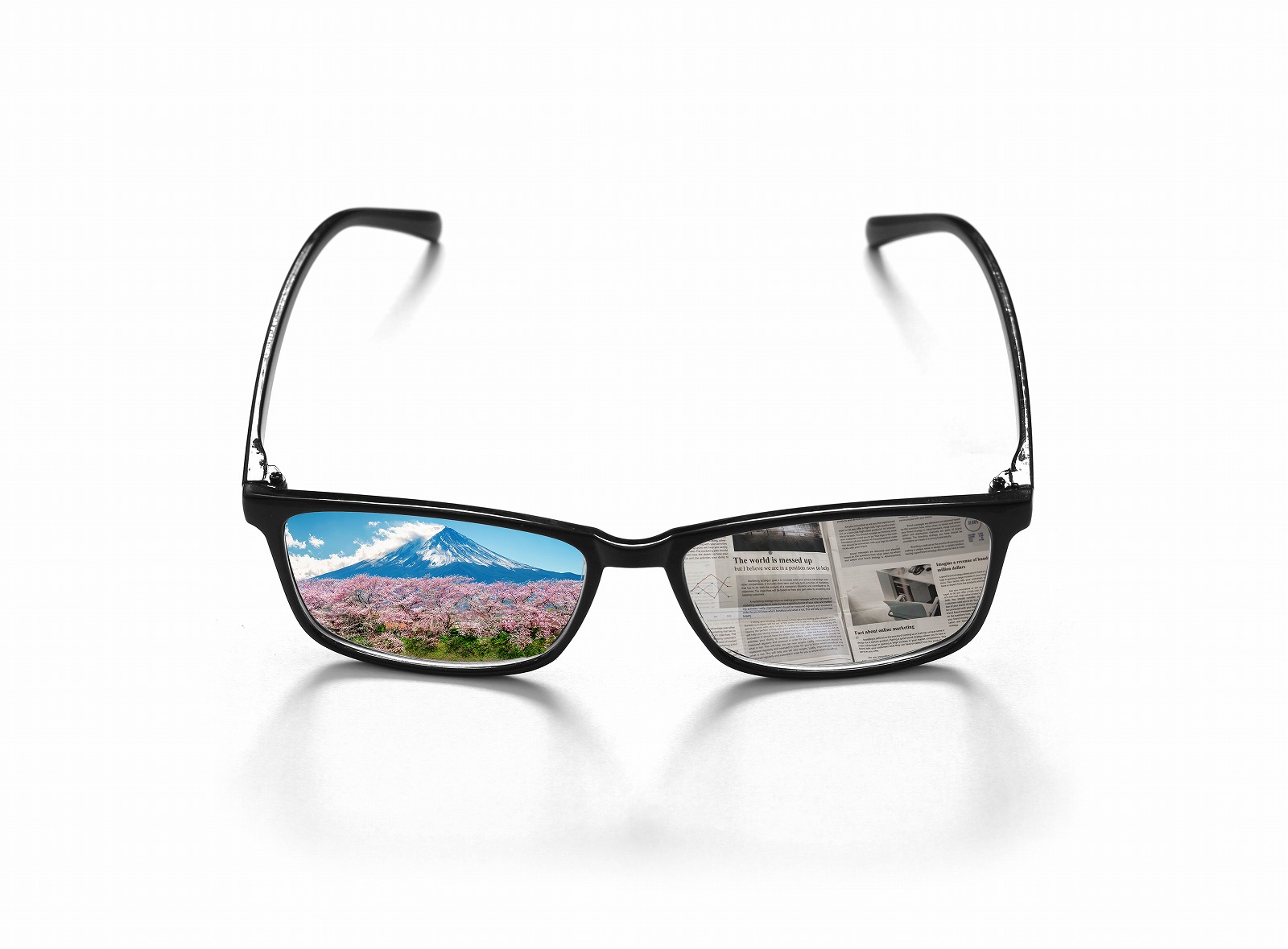Although I have good vision, my eyes get strained by work! That is probably because the lenses do not fit the desired viewing distance.
Eyeglasses fit for the desired viewing distance reduce strain on the eyes.
Strain on the eyes can be considerably reduced by making eyeglasses with the desired viewing distance (distance of sight) taken into account.
The nearest distance at which things are clearly visible in a tense state using the amplitude of accommodation is called the near point. The farthest distance at which things are clearly visible in a relaxed state without using the amplitude of accommodation is called the far point.
The visible distance from the near point to the far point is called the zone of clear. Your eyes start to decline with age from as early as in your 10s, and the distance to the near point gradually becomes long.
This means that as you get older from your 10s to 20s and to 30s, looking at nearby things imposes strain on the eyes.
Strain on the eyes can be minimized if you see nearby things with eyeglasses with a power that can relax the eyes, or eyeglasses that do not use the amplitude of accommodation.
The eyeglasses do not fit the desired viewing distance (distance of sight).
The eyes get strained if you look at nearby things for a long time when you can look far with unaided eyes or when you wear eyeglasses or contact lenses adjusted to far vision.
This is because the eyes remain strained although the power of the eyes is unfit for the desired viewing distance.
Many people impose strain on the eyes when they look at nearby things with eyeglasses adjusted to far vision for a long time during work or study.
You might recall various situations, such as home study, study for exams, deskwork, smartphone, work on VDT, and handcrafts.
- Countermeasures / Improvements
-
- First of all, try to rest the eyes regularly.
- You had better make eyeglasses with a power that enables you to look at things at hand in a relaxed state.
- In addition, strain on the eyes can be reduced if you use lenses that slightly support the viewing distance at hand.
- It is also recommended to use colored lenses that can reduce glare or flicker, or blue light cutoff lenses together.










